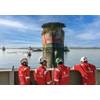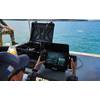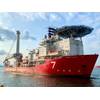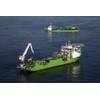Report: Faulty Blowout Preventer Contributed to BP Spill
A faulty blowout preventer and weaknesses in how companies analyze potential hazards in offshore oil and gas operations contributed to BP Plc's deadly Gulf of Mexico oil spill more than four years ago, the U.S. Chemical Safety Board said on Thursday.
Despite tougher regulations, a slew of other investigations and an ongoing federal civil trial with potentially billions of dollars at stake, companies may still drill without demonstrating that they have adequate barriers to deadly accidents in place, the agency said.
The CSB, which has no enforcement authority but can recommend safer practices, routinely probes accidents at chemical plants and refineries. The BP investigation was its first involving an offshore accident.
The CSB didn't examine all aspects of the Macondo blowout and explosion that killed 11 men and unleashed more than 4 million barrels of oil into the Gulf.
Rather than re-examine issues already covered by other probes, including those by the U.S. Coast Guard and a commission appointed by President Barack Obama, the CSB studied equipment and hazardous materials operations and safety management.
BP spokesman Geoff Morrell said the core findings were consistent with other probes that said the disaster stemmed from multiple causes involving multiple parties.
The CSB concluded that the blowout preventer (BOP) failed because miswired control systems would have prevented it from sealing the blown-out well.
A blowout preventer is a multi-ton stack of valves and pipes that sits atop deepwater wells to stop oil and gas from gushing upward in an accident.
Also, the board said different pressures inside the drillpipe and the area between the pipe and the well moved it off center, so a key piece of equipment in the blowout preventer called the shear ram couldn't slice through the pipe to seal the well.
Other probes had found that explosions aboard Transocean's Deepwater Horizon rig moved the pipe.
The issues underscore existing and undetected BOP design limits, the CSB said.
In addition, the board said that while regulators began requiring operators to do hazard analyses for all offshore structures post-Macondo, the rule doesn't require a risk reduction target or documented rationale of hazard control.
That means companies can do a weak analysis that doesn't identify the operating condition of critical safety equipment - like a BOP - and still comply with the rule, the board said.
In 2011, the maker of the BOP, Cameron International Corp , agreed to a $250 million settlement with BP to help pay for costs associated with the spill.
(Reporting By Kristen Hays; Editing by Terry Wade and Cynthia Osterman)















 February 2024
February 2024



